Stripping the starter motor
The Video Course teaches you everything about modern cars.
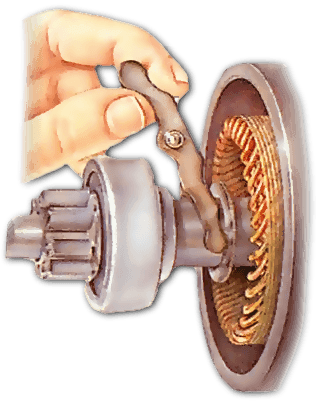
Remove the starter motor from the car (See Checking and replacing starter-motor brushes ).
The body of a motor with a cover band is held together by two long bolts, usually with slot heads.
A motor without a cover band usually has four short bolts at each end but sometimes the commutator end is secured by a circular, toothed spring clip on the shaft, with perhaps two other bolts.
The spring clip is not reusable, so make sure you have a replacement: not all dealers stock them.
Wash all the parts in methylated spirit. Alternatively, wash them in petrol, but make sure they are thoroughly dry before reassembling the motor. A spark can ignite petrol vapour and cause an explosion.
When you reassemble the motor, check or re-check the insulation of the field coils (See Checking the starter circuit ).
Make sure that the throughbolts do not touch the field-coil connections.
Do not forget to hold any type of terminal post to keep it from turning when you replace the nuts.
Removing the solenoid from a pre-engaged starter
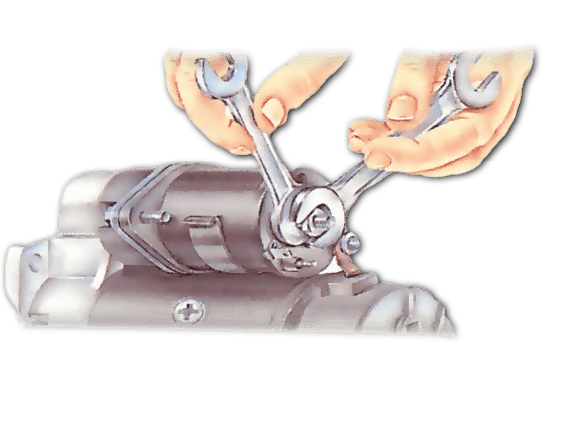
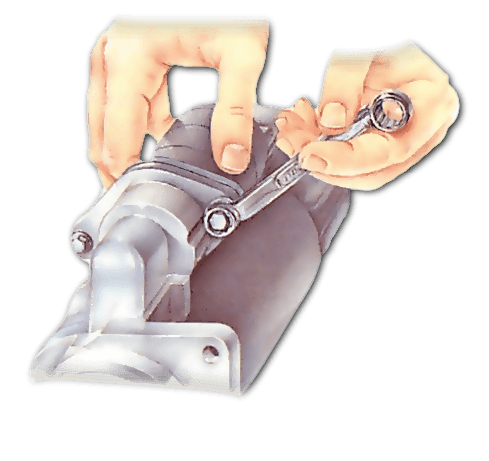
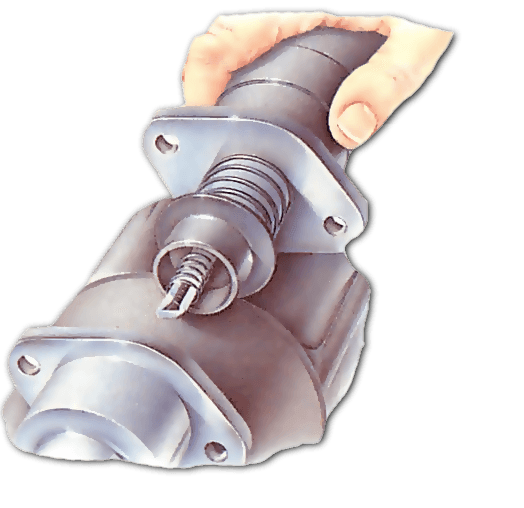
Take the nuts off the connection between solenoid and motor, using an open-ended spanner to stop the terminals from turning.
Remove the nuts or screws holding the solenoid to the motor body, and pull or unhook the solenoid free.
Before refitting the solenoid, smear a little light oil on the plunger.
Stripping a pre-engaged starter
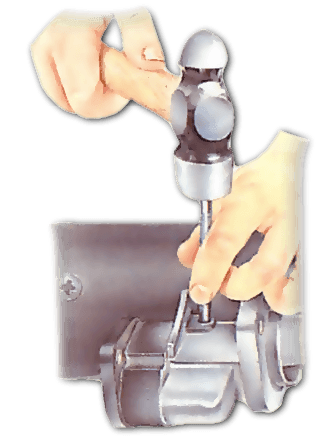
With the solenoid off, remove the actuating fork.
The whole fork pivots on a pin, which may be a force fit . If so, drive it out with a punch.
Or the pivot pin may itself be secured by a split pin. Straighten and pull out the split pin and push the pivot pin out from the other end.
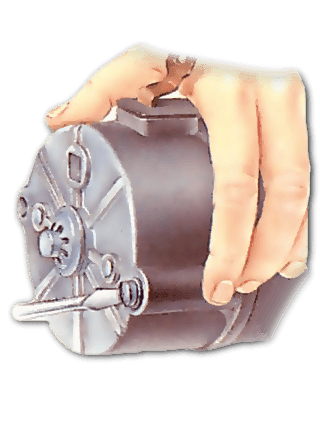
Finally, the pivot pin may be screwed in. Some screw pins have an eccentric shoulder to adjust the travel of the pinion.
Scratch the head to mark its position so that you can refit it in the same place. Then release the locknut and unscrew the pin.
The fork may be plastic or metal. In some cases the two prongs of the fork may be fastened to the large actuating plate by rivets , and should not be removed.

If a fork of that type is damaged and must be replaced, it can be slid off the armature shaft as the Bendix assembly is removed (See Replacing the Bendix gear ).
If the commutator end is held on by a circular spring clip, lever the clip off with a screwdriver. This calls for force and patience. Take care not to damage the shaft.
Remove all the bolts holding the endplates to the body of the motor. Take off the endplates. Pull out the armature.
Dismantling an inertia starter
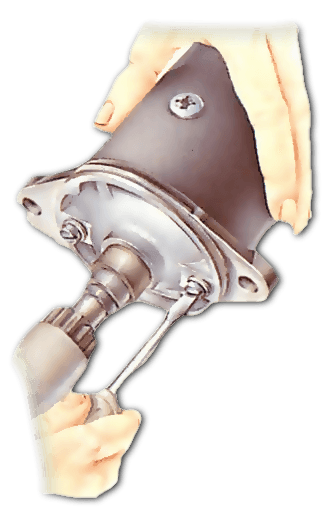
Remove all the bolts holding the endplates to the motor body. Take off the commutator endplate.
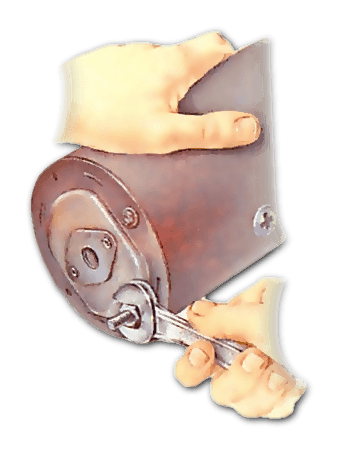
Pull out the brushes from their housings to free the plate.
Note which brush of each pair has a long and a short lead, so that you can refit them correctly.
The Ultimate Car Mechanics video course
Learn everything about modern cars from our new video series.
Learn more >-
We build a Mazda MX5 Miata from scratch
We start by tearing down and then rebuilding the whole car.
-
Every part explained
There's ridiculous detail on every part. Clearly and easily explained.
-
All modeled in 3D
We've created the most detailed 3D model ever produced so we can show you everything working.






